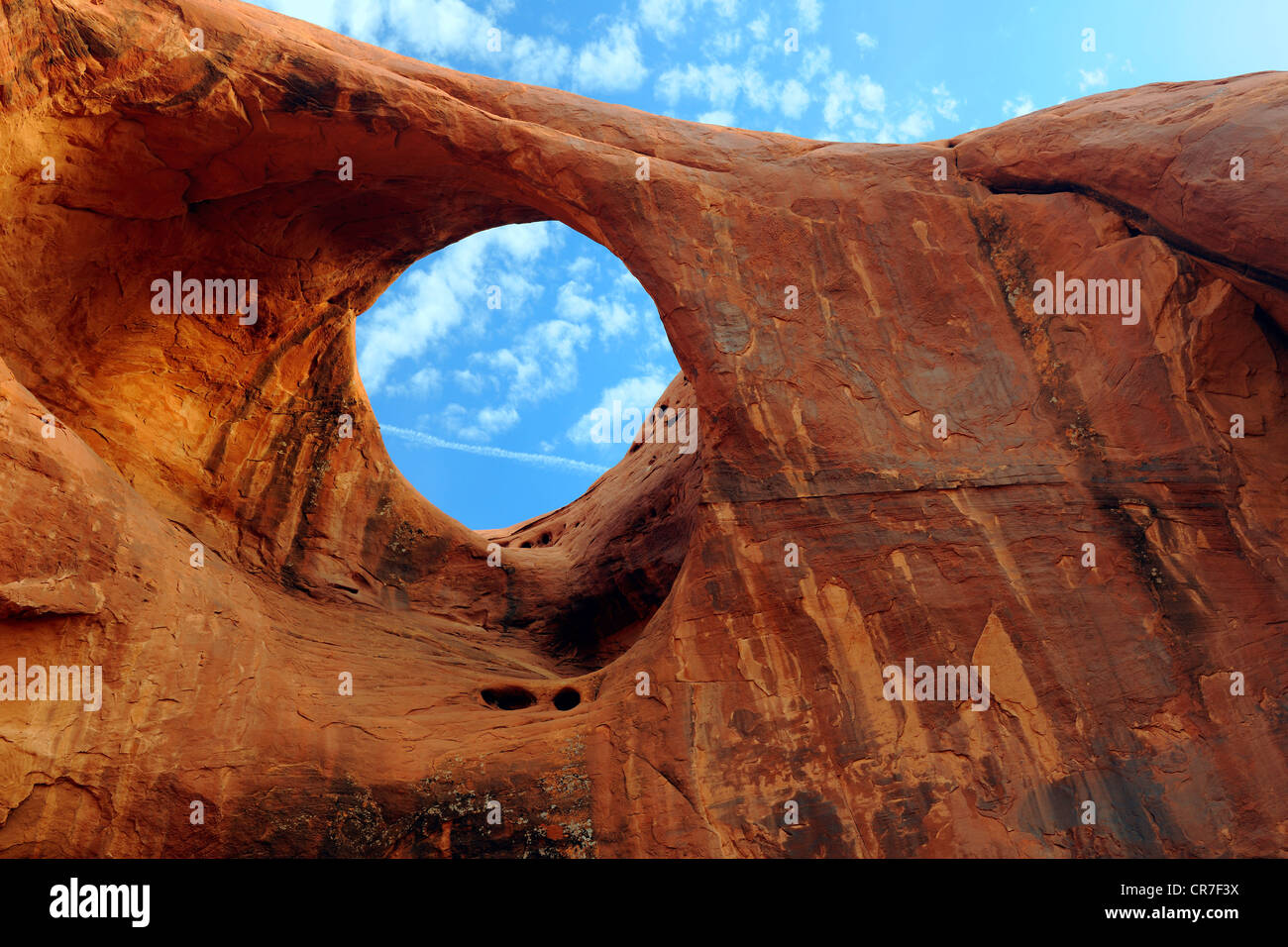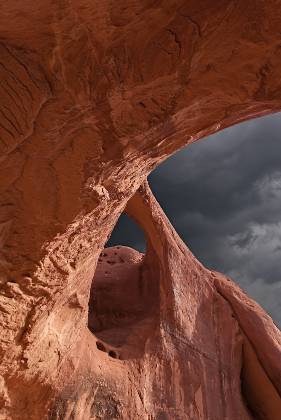Moccasin Arch Monument Valley
Find the top-rated and best-reviewed tours and activities in Moccasin Arch for 2020. From prices and availability to skip-the-line options and mobile tickets, get all the information you need to make the most of your trip to United States. The trip through Mystery Valley included ruins, arches, rock art, and beautiful viewpointss. Arches included The Sun's Eye, Honeymoon Bridge (above), and Moccasin Arch. One of the highlights was a well-known sheep petroglyph (below right). Monument Valley.
- Moccasin Arch Monument Valley Park
- Moccasin Arch Monument Valley Visitor Center
- St Louis Arch Monument
- Moccasin Arch Monument Valley Park
- Moccasin Arch Monument Valley Lodge
Thursday, 9/11/97
Monument Valley:
Petroglyphs, Ruins & Arches
'When asked by an anthropologist what the Indians called America before thewhite man came, an Indian said simply, 'Ours.' ---Vine Deloria Jr.
I followed Tom's truck to the first stop, anarch called The Sun'sEye, pictured at left. In my mind's eye, I couldn't help butsee a digitally added full moon in the center, but it is presentedhere in its original form.
This part of the Valley is closed withouta guide. It is not restricted to profit from tour groups, but toprotect those Navajos who still live in the valley (manyof whom herd sheep the same as their ancestors of 300 yearsago), and toprotect priceless artifacts of Native American heritage, some of which are pictured on this page.
Awe. That's all I could feel when Tom pointed upthe wall and said, 'those were drawn about a thousandyears ago by people who later disappeared without a trace.'They were made by Anasazi, which he translated to mean 'enemyof old,' or 'ancient enemy.' That is a Navajo name,as he pointed out sadly, we do not even know what they calledthemselves.
---Paula Gunn Allen
I noticed as we left, he mysteriously gave a couple of long low whistles, just as he'd done when we arrived. When I askedif this had some significance (I imagined some call to the spirits), he replied, 'no, I just like to hear it echo.'
I thought about chatting with him about image and marketing, butthe man hadn't even negotiated a price before he took me on.He was only interested in being himself. I liked that.

Tom's only fare that trip (other than the $30 I latergave him unsolicited) was a German couple in their late 20's.They were quite nice, but most interested in the fact thisis not a National Park, but a Navajo Tribal Park. When they askedTom if the tribe maintained the park and the roads since they owned it, Tom chuckledand said, 'The only maintenance done out here is by MotherNature. And we have never said we own theland, we are its caretakers.'
---Native American Proverb
Moccasin Arch Monument Valley Park
Pictured at left are Anasazi graineries, 700 to 800years old. They were fenced off to keep visitors from damagingthe fragile ruins. Vandals have been a problem here, as I saw petroglyphs with 'Alice' scrawled overthem. Many artifacts have been stolen. As Tom stood there tellingus about these troubles, he looked down, picked up some shards,and said, 'these are pieces of ancient pottery. You can lookat them, and touch them, but you can't take them with you.'
Around the corner were thesepetroglyphs of Kokopelli, a flute player whose Native Americanheritage dates back as early as 200 AD. On a gift shop statue itsaid, 'this legendary well-travelled and footloose figurewas a god to some, a nuisance to others, and a bearer of goodluck and health to many.' When pictured lying down playinghis flute, it is thought he was praying for rain. But no onereally knows what these drawings mean. As Tom pointed out, thepetroglyphs pictured at the top of this page feature animals with horns that curlin a direction unlike that of any known animal in the historyof North America. He seemed to believe they drew their dreams,or one 'visionary' from their clan did. Some of thosedreams have since been overwritten by 20th Century 'visionaries'with names like 'Henry Loves Alice.'
On the way to Moccasin Arch (at left) and Big Hogan(below), we encountered two spots that caused Tom to slow hisheavy duty, high clearance, 4x4 vehicle... to ... a ... crawl. After he rocked heavily through this yetunseen obstacle, the male German tourist turned around with a lookthat said, 'there's no way he's going to make it, and itis my duty as a tourist to watch this catastrophe.' Tom'sforward progress revealed a 4 foot long, 2 foot deep chasm, filledwith mud. In 1.5 seconds, a chorus of voices ran through my head:'No Way' 'C'mon, it's a rental' ' 'No Way' 'There's no other way out' 'No Way' 'This is why they made Full Coverage Per DiemInsurance' 'I need warp speed *NOW* Scotty!'
The White Whale did me proud through that, andan equally daunting second 'pothole.' But it was timefor me to go check out of Goulding's, so I asked Tom fordirections back to the valley loop road. He said, 'yousee that tree there? You go around that curve and you'll seesome rocks, and then another tree, and then you'll be at theloop road.'
I drove for what seemed like miles, fording a shallow stream... twice. Rocks? Yeah, they were all over. Trees? Fewer in number, but since this road had no turnoffs, I assumed I wasn'tlost, and I eventually pulled over a rise into the parking lotthat overlooks The Totem Pole with a cloud of dust, startlingsome polyester clad tourists. As I inspected the White Whale formissing parts, I heard one of them complaining about the roughcondition of the parking lot.
Lady, you have no idea....
---Chief Joseph

Antelope Canyon
Petroglyphs, Ruins, & Arches
PhotoDude on Photo Safari
| Moccasin Mountains | |
|---|---|
Moccasin Mountains (at Moccasin, AZ) of Arizona and Utah | |
| Highest point | |
| Peak | Lone Butte (Moccasin Mountains) |
| Elevation | 6,191 ft (1,887 m) |
| Dimensions | |
| Length | 11 mi (18 km) |
| Width | 8 mi (13 km) |
| Geography | |
| Country | United States |
| States | Arizona and Utah |
| Counties | Mohave County, AZ and Kane County, UT |
| Communities | Kaibab, AZ and Moccasin, AZ |
| Range coordinates | 36°54′34″N112°45′32″W / 36.90944°N 112.75889°WCoordinates: 36°54′34″N112°45′32″W / 36.90944°N 112.75889°W |
| Borders on | Zion National Park, Block Mesas, White Cliffs, Moquith Mountains, Vermilion Cliffs, Yellowstone Mesa, Antelope Valley and Clayhole Valley |
The Moccasin Mountains is an 11-mile-long (18 km)[1][2] mountain range located at the Arizona–Utah border in Mohave County, Arizona, and a small north section in Kane County, Utah.
The range comprises, at lower elevations, the Vermilion Cliffs, as part of its northeast, east, south, and southwest borders. Moccasin Canyon in the center-south, and Twomile Wash at the southeast lie in sections of the Vermilion Cliffs, and most of the entire mountains are part of the Kaibab Indian Reservation.
Moccasin, Arizona lies at the downhill stretch of Moccasin Canyon; Kaibab lies 2 miles (3.2 km) southeast, with both townsites surrounded by the Vermilion Cliffs.
Pipe Spring National Monument is 2 miles (3.2 km) south of Kaibab. In Utah, the northeast of the mountains are bordered by Coral Pink Sand Dunes State Park.
Description[edit]
The mountains are mostly a circular section and about 11 miles (18 km) long north-to-south. The southeast is defined by a canyon section, with the southeast-flowing Twomile Wash; origins of the wash, and its canyon reaches almost the mountain range centerpoint. The townsites of Moccasin and Kaibab are in this southeast section. Point Spring is located just northeast of the towns.
Two other springs are located in the range. At the southwest is Meeks Spring, at the origin of Potter Canyon, which trends southwest, then almost due-south. The central northeast of the range contains Willow Spring. Another spring is just east, Red Cliff Spring, at the base of the Vermilion Cliffs, and at the south terminus of the Moquith Mountains, (below Ed Lamb Point).
Peaks[edit]
There are no major peaks in the center of the mountain range. In Arizona, 1 mile (1.6 km) southwest of the Vermilion Cliffs foothills, is Lone Butte, at 6,191 feet (1,887 m).[3]Cane Beds, Arizona, (elevation 5,099 feet (1,554 m)),[3] at the southwest mountain foothills, lies 2 miles (3.2 km) north, so there is a prominence of about 1,090 feet (330 m).
In Utah, there is also a highpoint at the north foothills, adjacent south, to Sand Dunes Road, Dixie Knoll, at 5,859 feet (1,786 m).[1]

Moccasin Arch Monument Valley Visitor Center
Access[edit]

Arizona State Route 389 traverses the southwest, south, and southeast foothills of the Moccasin Mountains, along the Vermilion Cliffs. Kaibab, and Moccasin, Arizona are on a 4-mile-long (6.4 km) route that trends north into the southern section of the mountains. Arizona 389 is accessed from Fredonia from the east, (adjacent to Kanab, Utah north, on U.S. Route 89), and from the west, Hildale-Colorado City; Cane Beds, AZ lies east of the two communities, at the Vermilion Cliffs, and the southwest region of the Moccasin Mountains.
The northwest, north, and northeast of the range in Utah can be accessed by Sand Dunes Road, and the region of Coral Pink Sand Dunes State Park. Sand Dune Road exits southerly from U.S. 89, just southeast of Mount Carmel Junction and Mount Carmel, and the Moccasin Mountains are about 15 miles (24 km) distant.[1]
St Louis Arch Monument
References[edit]
Moccasin Arch Monument Valley Park
- ^ abcUtah Atlas and Gazetteer (7th ed.). DeLorme. p. 58.[clarification needed]
- ^Arizona Road & Recreation Atlas (2nd ed.). Benchmark Maps. pp. 28, 62.
- ^ abArizona Road & Recreation Atlas (2nd ed.). Benchmark Maps. p. 28.
External links[edit]
Moccasin Arch Monument Valley Lodge
